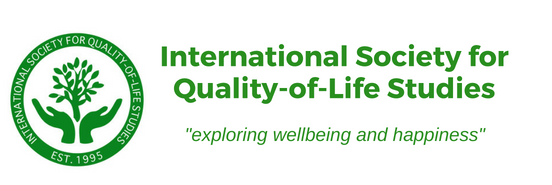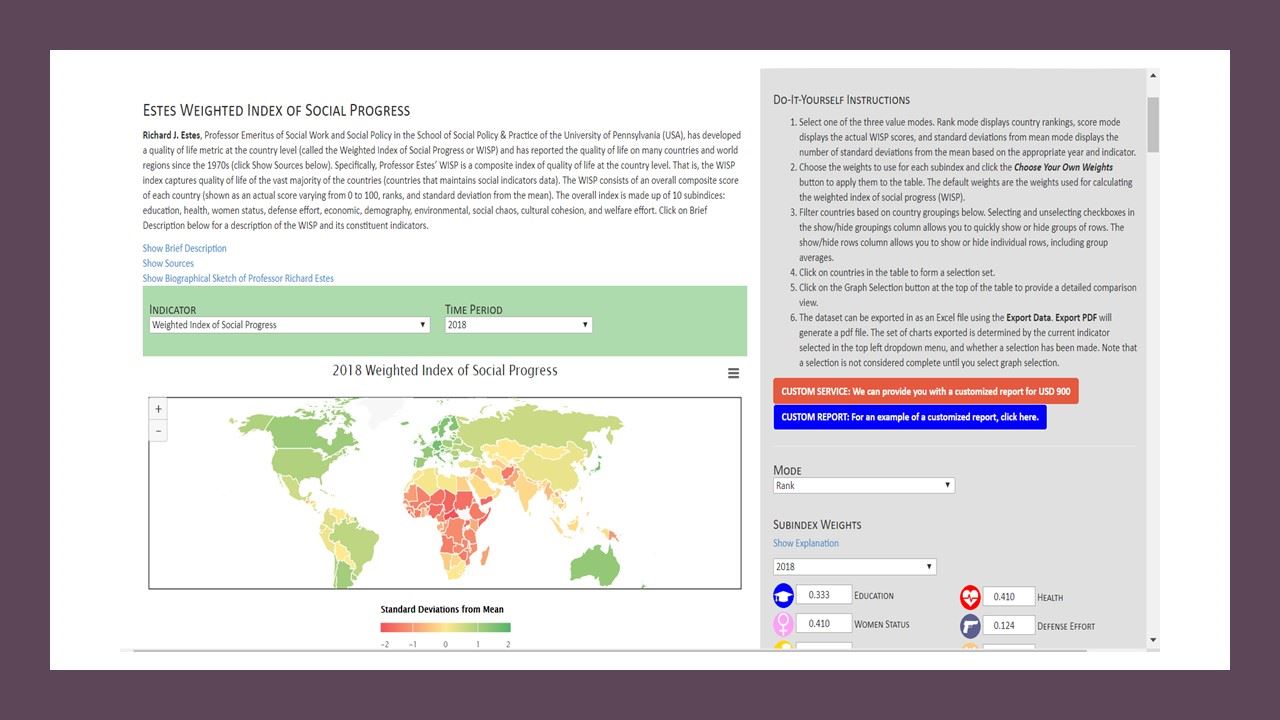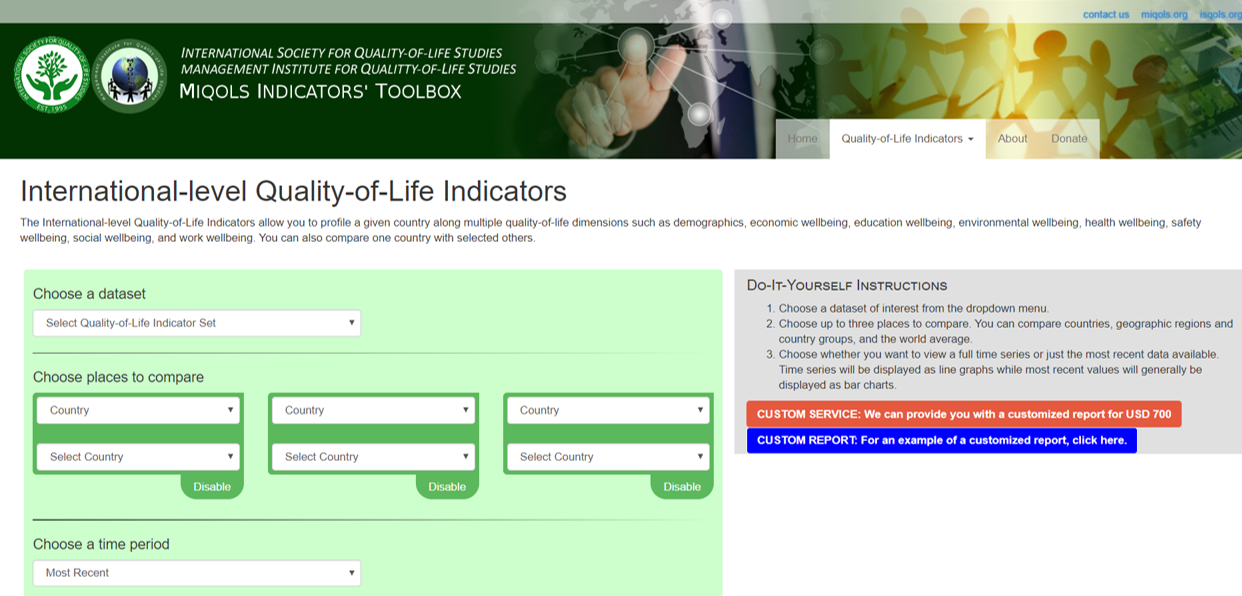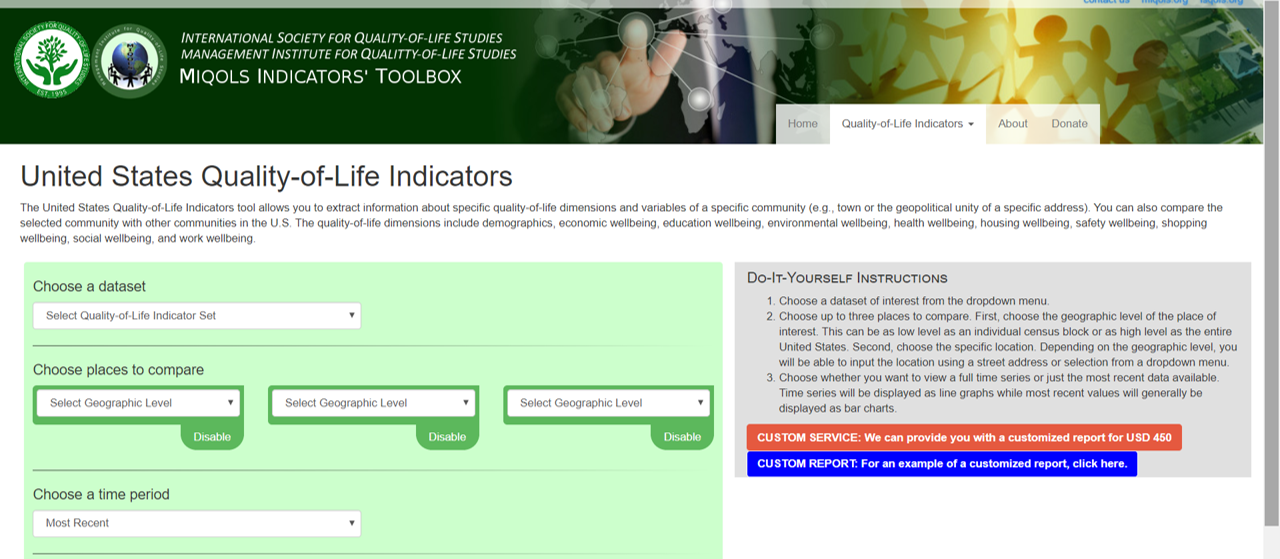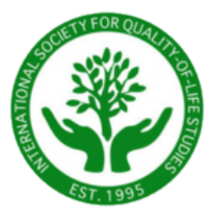QUALITY-OF-LIFE INDICATORS
Estes Weighted Index of Social Progress Richard J. Estes, Professor Emeritus of Social Work and Social Policy in the School of Social Policy & Practice of the University of Pennsylvania (USA), has developed a quality of life metric at the country level (called the Weighted Index of Social Progress or WISP) and has reported the quality of life on many countries and world regions since the 1970s (click Show Sources below). Specifically, Professor Estes’ WISP is a composite index of quality of life at the country level. That is, the WISP index captures quality of life of the vast majority of the countries (countries that maintains social indicators data). The WISP consists of an overall composite score of each country (shown as an actual score varying from 0 to 100, ranks, and standard deviation from the mean). The overall index is made up of 10 subindices: education, health, women status, defense effort, economic, demography, environmental, social chaos, cultural cohesion, and welfare effort. Click on Brief Description below for a description of the WISP and its constituent indicators. |
International-level Quality-of-Life Indicators
The International-level Quality-of-Life Indicators allow you to profile a given country along multiple quality-of-life dimensions such as demographics, economic wellbeing, education wellbeing, environmental wellbeing, health wellbeing, safety wellbeing, social wellbeing, and work wellbeing. You can also compare one country with selected others. The MIQOLS QOL Indicators toolbox is an array of online utilities designed to help quality-of-life researchers, real estate professionals, stakeholders, and decision makers get a better look at their communities along various selected dimensions. Currently, only the community comparison tool is completed, but we anticipate many more tools to be added in the years ahead. |
United States Quality-of-Life Indicators The United States Quality-of-Life Indicators tool allows you to extract information about specific quality-of-life dimensions and variables of a specific community (e.g., town or the geopolitical unity of a specific address). You can also compare the selected community with other communities in the U.S. The quality-of-life dimensions include demographics, economic wellbeing, education wellbeing, environmental wellbeing, health wellbeing, housing wellbeing, safety wellbeing, shopping wellbeing, social wellbeing, and work wellbeing. The MIQOLS QOL Indicators toolbox is an array of online utilities designed to help quality-of-life researchers, real estate professionals, stakeholders, and decision makers get a better look at their communities along various selected dimensions. Currently, only the community comparison tool is completed, but we anticipate many more tools to be added in the years ahead. |
